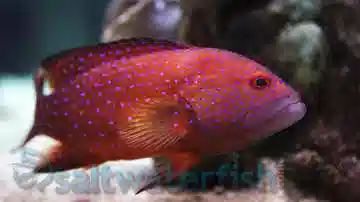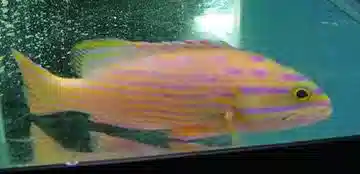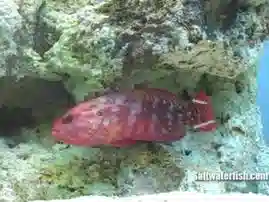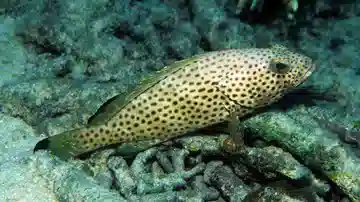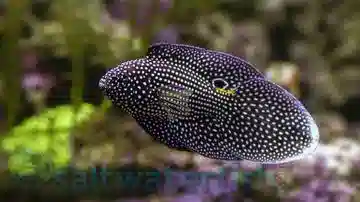Marine Betta
Calloplesiops altivelis
(0 Reviews)

Marine Betta
Calloplesiops altivelis
(0 Reviews)
{{ item.name }}
Size: {{ item.extra_field_3 }}
${{ getFormattedPrice(item.saleprice) }} ${{ getFormattedPrice(item.price) }}
To join the waiting list, click here
Free Shipping
With
$199.00
or more in Marine Life.
More details...
Marine Betta Care Facts
| Care Level: | Expert |
|---|---|
| Temperament: | Semi-aggressive |
| Diet: | Carnivore |
| Origin: | Indian Ocean |
| Minimum Tank Size: | 55 gallons |
| Acclimation Time: | 3+ hours |
| Reef Safe: | No |
| Coral Safe: | Yes |
| Invertebrate Safe: | No |
| Lighting: | |
| Placement: | |
| Waterflow: |
Marine Betta (Calloplesiops altivelis): A Graceful Predator for Your Saltwater Aquarium
Welcome to an in-depth exploration of the Marine Betta, scientifically known as Calloplesiops altivelis. This educational product description will provide comprehensive insights for marine aquarium enthusiasts. Topics will include the Marine Betta's natural habitat, reef compatibility, size, lifespan, dietary needs in captivity, availability through aquaculture, compatibility with other marine species, sexual dimorphism, juvenile to adult coloration changes, temperament, detailed tank requirements, specific water conditions, common names, and suggested compatible tankmates. Additionally, we will outline why acquiring the Marine Betta from Saltwaterfish.com is an excellent choice.
The Marine Betta's Habitat and Natural Range
The Marine Betta, Calloplesiops altivelis, hails from the tropical Indo-Pacific waters. These captivating creatures are typically found in sheltered reef environments, often lurking in caves, crevices, or overhangs. Their habitat choice reflects their solitary nature and preference for safe and secluded resting places.
The Marine Betta's Reef Compatibility
Although predatory by nature, Marine Betta is generally considered reef-safe when housed with appropriate tankmates. Their size, non-aggressive demeanor, and unique appearance make them an excellent addition to reef aquariums. However, caution should be exercised when introducing them to smaller invertebrates, as their predatory instincts may lead to potential conflicts.
Size and Lifespan of the Marine Betta
One of the intriguing aspects of the Marine Betta is its size. Typically, they reach a modest adult length of around 4 to 8 inches (10 to 15 centimeters). When provided with proper care and a suitable environment, Marine Bettas can live up to 10 years, ensuring years of enjoyment for their keepers.
The Marine Betta's Diet in Captivity
In captivity, Marine Bettas are carnivorous predators. To maintain their health and vibrant coloration, it is essential to provide a diet rich in protein. Consider the following dietary options:
- High-quality marine-based pellets: Specially formulated pellets designed for carnivorous fish serve as a staple in their diet.
- Frozen foods: Offer a variety of frozen foods such as Mysis shrimp, brine shrimp, and chopped seafood. These options closely resemble their natural prey.
- Live foods: Occasional live offerings such as small fish or crustaceans can be provided as a treat, stimulating their hunting instincts.
A well-balanced diet will help your Marine Betta thrive and showcase its striking appearance.
Aquaculture and Availability of the Marine Betta
Marine Betta specimens are unavailable through aquaculture, making wild-caught individuals the predominant choice in the aquarium trade. When purchasing a Marine Betta, it is crucial to select a reputable source that prioritizes the health and sustainability of these fish.
The Marine Betta's Compatibility with Other Fish and Invertebrates
Marine Bettas are known for their relatively peaceful nature, making them compatible with various marine tankmates. Here are five suitable tankmates to consider:
- Clownfish (Amphiprion spp.): Known for their hardy nature, clownfish make excellent companions for Marine Bettas.
- Dwarf Angels (Centropyge spp.): Many dwarf angelfish species share similar habitat preferences and are compatible tankmates.
- Firefish (Nemateleotris spp.): Peaceful and attractive, firefish can coexist harmoniously with Marine Bettas.
- Gobies (Gobiidae spp.): Gobies, particularly smaller species, are suitable tankmates due to their non-aggressive behavior.
- Blennies (Blenniidae spp.): Blennies add diversity to your tank and cohabitate well with Marine Bettas.
However, monitoring tank dynamics and choosing tankmates that share compatible dietary and environmental requirements is essential to ensure a thriving community.
Sexual Dimorphism of the Marine Betta
Marine Bettas do not exhibit significant sexual dimorphism, making it challenging to distinguish males from females based on visual characteristics. Both sexes share similar physical traits.
Juvenile to Adult Coloration Changes
Juvenile Marine Bettas typically sport vibrant red-orange bodies adorned with distinctive white spots. As they transition to adulthood, their coloration gradually changes to a more subdued red or maroon hue, and the white areas may become less pronounced. This shift adds to their allure and intrigue in your aquarium.
Temperament of the Marine Betta
Marine Bettas are solitary and non-aggressive by nature, which sets them apart from many other predatory species. They often prefer to perch on rocks, corals, or sheltered areas, waiting patiently for potential prey to pass. Their calm and reserved temperament makes them an excellent choice for hobbyists seeking a unique predator without the aggression of other marine predators. They are jumpers, however. Make sure your aquarium has a full lid.
Tank Requirements for the Marine Betta
Creating an ideal environment for your Marine Betta requires careful attention to tank parameters:
- Minimum Aquarium Size: A tank with a capacity of at least 50 gallons is recommended to provide ample swimming space and accommodate their natural behaviors.
- Aquascaping: Incorporate a variety of live rock structures, caves, and hiding spots to mimic their natural habitat. This allows your Marine Betta to establish territories and feel secure.
- Water Conditions: Maintain stable water conditions with the following parameters:
- pH: 8.1 to 8.4
- Salinity: 1.020 to 1.025
- Water Temperature: 75°F to 82°F (24°C to 28°C)
- Water Flow: Provide moderate water flow, as Marine Bettas prefer areas with gentle to mild currents.
Other Common Names for the Marine Betta
The Marine Betta is also commonly called the Comet, Falco's Hawkfish, or Harlequin Filefish, although these names can vary by region.
Why People Should Buy the Marine Betta from Saltwaterfish.com
Acquiring a Marine Betta from Saltwaterfish.com offers a host of benefits:
- Quality Assurance: We prioritize the health and well-being of our marine specimens. Each Marine Betta is carefully selected for its vibrant coloration and robust health.
- Expert Guidance: Our team of marine experts is available to provide guidance and support, ensuring your Marine Betta thrives in your aquarium.
- Convenience: We offer the convenience of online selection and home delivery, making it easy to choose your Marine Betta.
- Sustainability: We support responsible collection practices and promote the welfare of marine ecosystems, ensuring a sustainable future for aquatic species.
In conclusion, the Marine Betta, Calloplesiops altivelis, is an enchanting addition to any saltwater aquarium. With its striking appearance, peaceful temperament, and compatibility with various tankmates, it is sure to captivate the hearts of marine enthusiasts. By choosing Saltwaterfish.com, you ensure the acquisition of a healthy and vibrant Marine Betta and support responsible aquarium practices.
Currently Marine Betta does not have any reviews.


